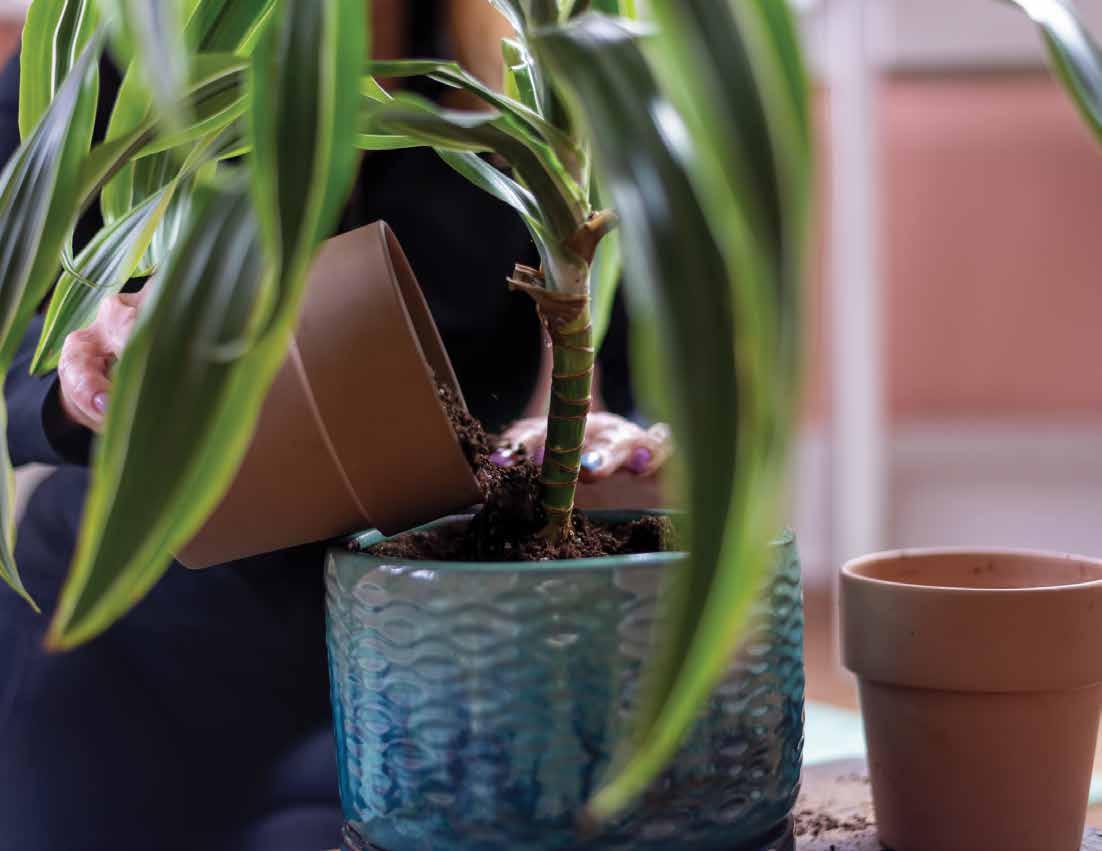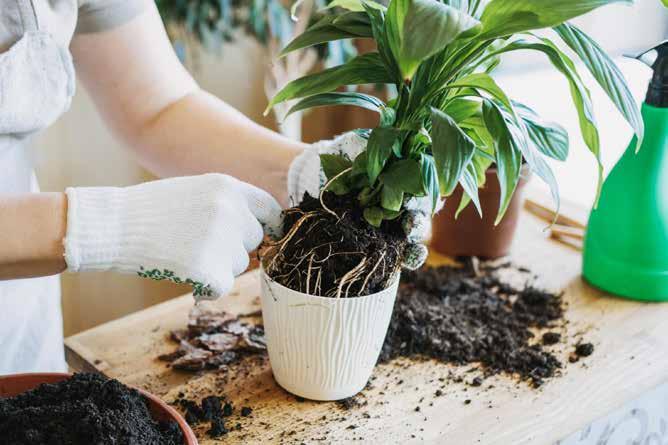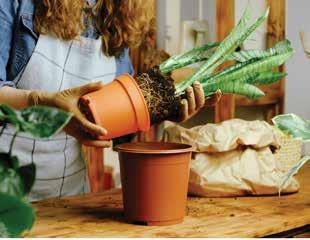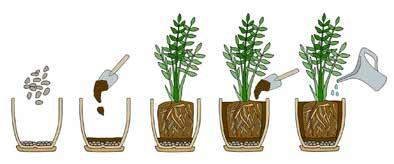

How to HousplantsRepot Houseplant Care

Determine the
Right Time to Repot
Roots are growing out of the drainage holes or circling the top of the soil (root-bound).
Water drains too quickly or sits on the surface — could mean compacted or depleted soil.
The best time to repot is in spring, giving roots time to establish before the plant’s resting season. Choose a pot just slightly larger than the current one—too big of a jump can cause root rot. Water your plant the day before to loosen the roots and make the move smoother. For plants sensitive to root rot, lightly moisten the soil instead—no need to soak.
Post-Repotting Care
Once your plant is in its new pot, give it time to adjust.
• Hold off on fertilizing for a few weeks—your plant needs time to recover and re-establish.
• Keep it in the right light and avoid sudden changes in temperature or humidity.
• Water thoroughly until it drains out the bottom. Do not let it sit in the water that drained out.
A little patience goes a long way—your plant will thank you with fresh, healthy growth!

How To:
1. Gently remove your plant from its pot.
2. Massage the root ball.
3. Place a co ee lter over the drainage hole. is will allow water to drain through while keeping the soil in. en, add a layer of soil to the bottom of the slightly larger pot.

Prep Work
4. Place the plant on top of the soil layer in the new pot and gradually ll around the plant with soil.
5. Firm the soil down with your thumbs adding more until level with the base of the stem.
6. Place soil-toppers to add a nishing touch.
7. Water your plant thoroughly until water drains out the bottom of the pot.
Get everything you need ready before repotting to keep your plant out of its pot for as little time as possible. If it's a big plant, don’t hesitate to ask someone for help—two sets of hands make it much easier and safer.
Supplies Checklist
New Pot (1–2 inches wider than the current one, with good drainage holes)
Fresh Potting Mix (appropriate for the plant type) Trowel or Scoop
Gloves
Watering Can
Shears (for trimming dead roots)
Tarp or Newspaper (to catch loose soil)

